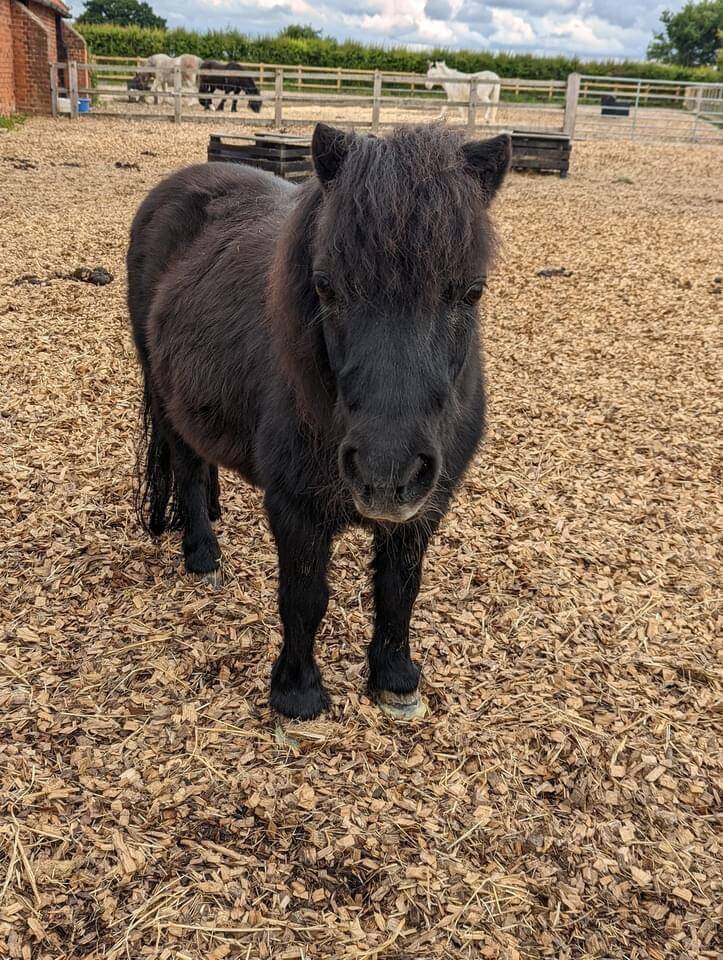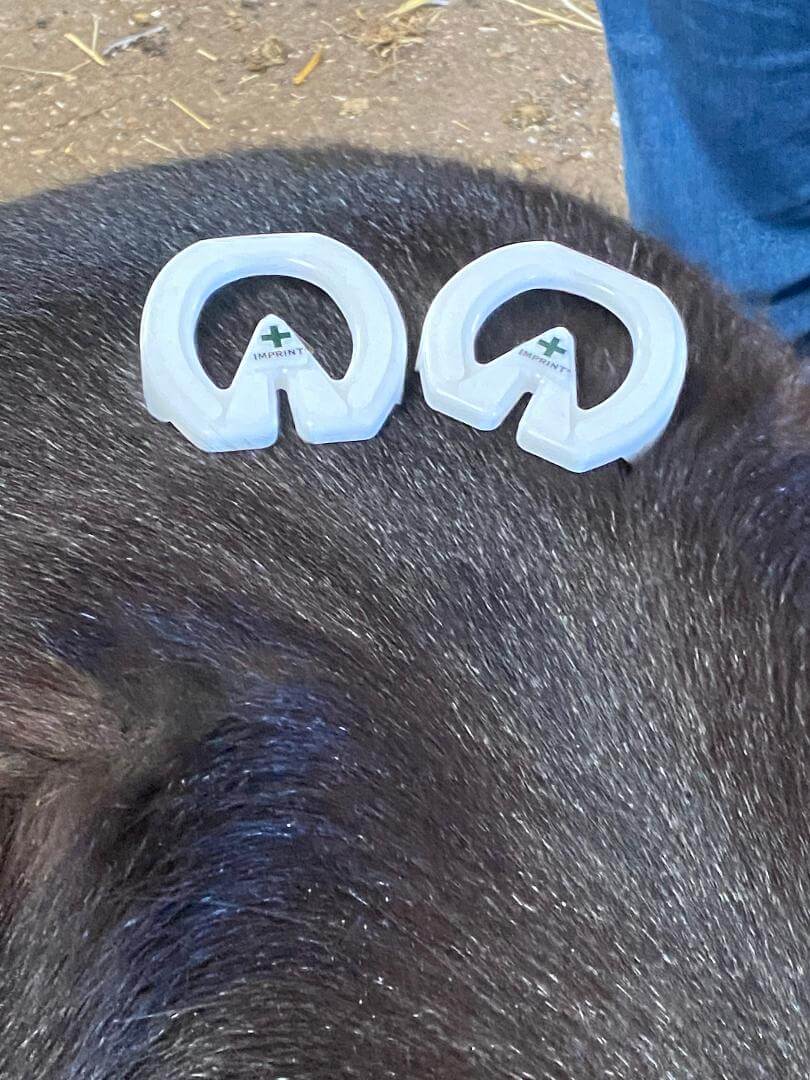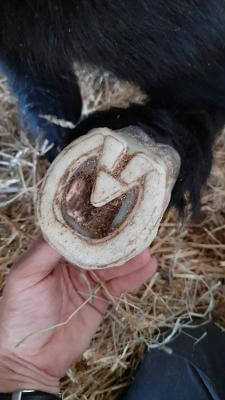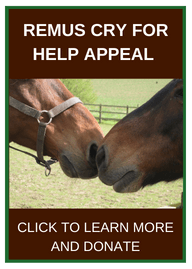


Little Ted’s New Shoes
Little Ted, one of our Shetland ponies, has been struggling a lot this spring with laminitis and has been extremely sore.
Working with our Vet and Farrier we agreed to try plastic glue-on shoes on him as they have helped some of our other horses. Ted is tiny so the shoes are very small, but they have made a huge difference. Of course, like everything now, they are very expensive to have fitted, but they have given him back a quality of life and given us back our happy old fella! You can see the little shoes shown resting on his back before being fitted.
With the increased nutrition, especially sugar that the spring and summer grass brings, it causes a condition called laminitis.
Laminitis is inflammation of the laminae of the foot – the soft tissue structures that attach the pedal (pee-dal) bone of the foot to the hoof wall. The inflammation and damage to the laminae causes extreme pain and leads to instability of the pedal bone in the hoof. In more severe cases it can lead to complete separation of and rotation of the pedal bone within the hoof wall which can penetrate through the bottom of the sole. This then becomes life threatening and often results in the horse being put to sleep.
To treat this, we remove the horse from the grassy paddock or field it is on and move it to a balder paddock or woodchip area or stabled facility. Grass is then completely avoided; hay is given in its place on a strict dietary amount. Pain relief is given as required and sometimes remedial farrier work is done. The horse or pony is closely monitored over the next few weeks for signs of improvement and to ensure it’s coping with this new management structure accordingly.
The vet will be contacted and will visit if necessary. Once an animal has a laminal episode they are then prone to it for life which is why we need more woodchip paddocks so that we can provide more laminitic horses with an outside environment where they don’t have access to grass but can still be outside with their friends and see what’s going on, rather than being stuck in a stable.
Over 90% of all episodes of laminitis are brought on by endocrine disease so either Pituitary Pars Intermedia Dysfunction (PPID, previously known as Equine Cushing’s Disease) which is a complex condition associated with abnormal function of a small, hormone-producing organ, the pituitary gland, that lies at the base of the brain. Or Equine Metabolic Syndrome which is a hormonal disorder quite similar to Type 2 diabetes in humans. Laminitis and its associated issues are responsible for approximately 7% of all equine deaths.
You can see further images of Little Ted supporting some very fetching glue-on shoes which reduce the concussion on his feet whilst walking to help support his laminitis.
If you’d like to make a donation towards a new laminitic paddock, please do so here.










